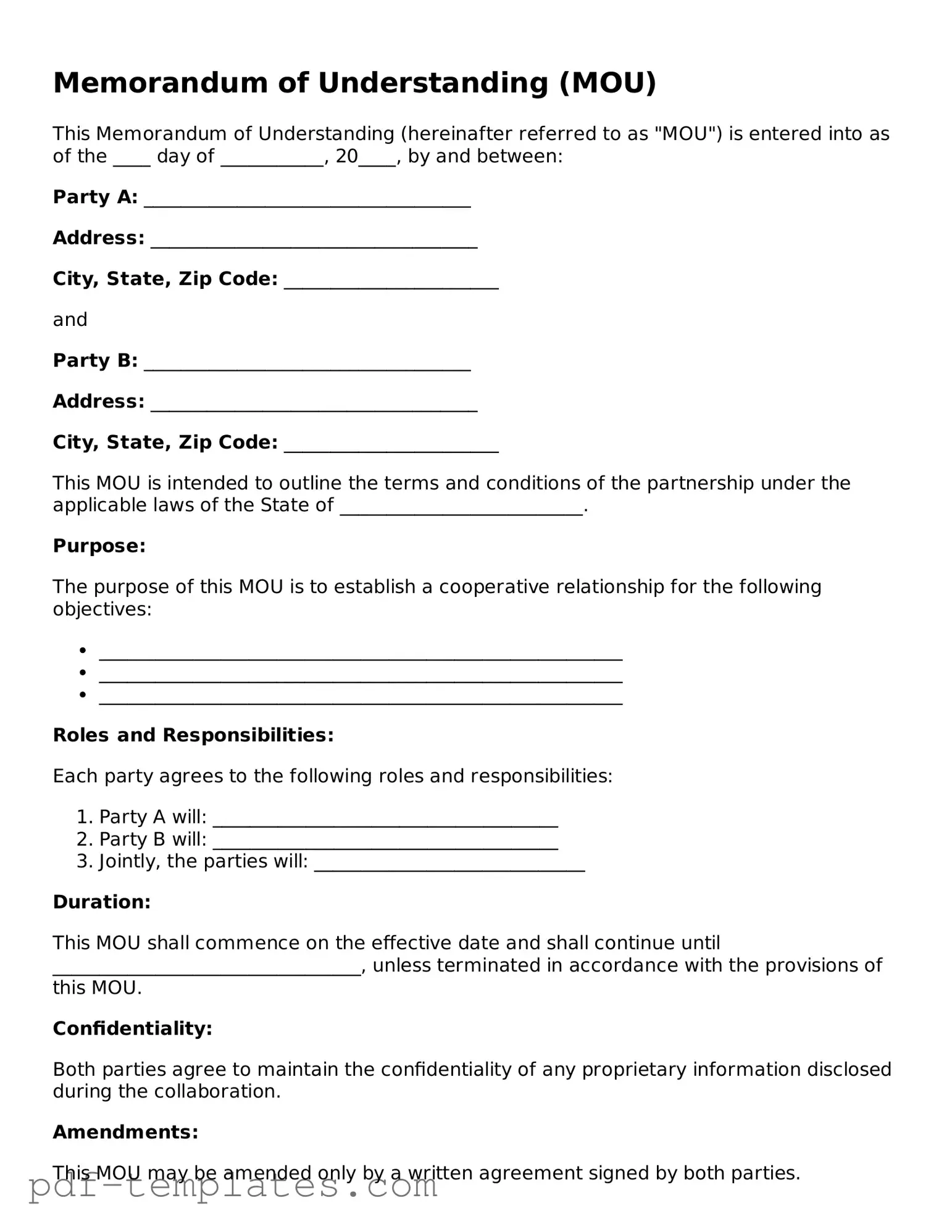A Letter of Intent (LOI) serves as a preliminary agreement between parties who intend to enter into a formal contract. It outlines the basic terms and conditions that both parties agree to, setting the stage for future negotiations. While an LOI is not legally binding in most cases, it demonstrates a serious commitment to pursue an agreement. This document often includes timelines, key responsibilities, and a framework for discussions, similar to a Memorandum of Understanding (MOU).
A Non-Disclosure Agreement (NDA) is designed to protect confidential information shared between parties. While an MOU focuses on collaboration and mutual understanding, an NDA emphasizes the importance of keeping sensitive information private. Both documents are crucial in establishing trust and ensuring that parties can communicate openly without fear of information leakage.
A Partnership Agreement formalizes the relationship between two or more parties who wish to collaborate on a business venture. Like an MOU, this agreement outlines roles, responsibilities, and the terms of the partnership. However, a Partnership Agreement is legally binding and typically includes provisions for profit sharing, decision-making processes, and dispute resolution, making it more comprehensive than an MOU.
A Service Agreement details the terms under which one party agrees to provide services to another. This document specifies the scope of work, payment terms, and timelines. While an MOU may outline a general understanding of a collaboration, a Service Agreement provides specific, enforceable terms that govern the relationship between the service provider and the client.
An Employment Agreement outlines the terms of employment between an employer and an employee. It includes details about job responsibilities, compensation, and benefits. Although an MOU may indicate a mutual understanding about employment terms, an Employment Agreement is a legally binding document that protects both parties and establishes clear expectations.
A Collaboration Agreement is similar to an MOU in that it defines the terms of cooperation between parties working together on a project. It specifies the contributions of each party, the objectives of the collaboration, and how any outcomes will be shared. Unlike an MOU, a Collaboration Agreement is often more detailed and can be legally binding, depending on how it is structured.
A Letter of Intent (LOI) plays a crucial role in the early stages of negotiations, serving as a preliminary outline of the principles of agreement among parties. While it does not create a legally binding contract, it signifies a serious intent to collaborate, helping to ensure that both sides have a mutual understanding before diving into detailed discussions. For those needing further guidance on drafting such documents, resources like OnlineLawDocs.com can provide valuable insights and templates.
A Joint Venture Agreement formalizes a business arrangement where two or more parties agree to work together on a specific project or business activity. This document outlines the contributions, responsibilities, and profit-sharing arrangements of each party. While an MOU may express a desire to collaborate, a Joint Venture Agreement solidifies that intent into a legally binding framework.
A Purchase Agreement is a contract that outlines the terms of a sale between a buyer and a seller. It specifies the items being sold, payment terms, and delivery details. In contrast to an MOU, which may express an intention to negotiate a sale, a Purchase Agreement is a definitive document that creates a legal obligation for both parties to fulfill the terms of the sale.
A Licensing Agreement grants permission from one party to another to use intellectual property, such as trademarks or patents. This document details the scope of use, duration, and any fees involved. While an MOU may indicate a willingness to license certain rights, a Licensing Agreement formalizes that arrangement and establishes legal protections for both parties.
A Settlement Agreement resolves disputes between parties, outlining the terms under which they agree to settle their differences. This document may include payment terms, confidentiality clauses, and other conditions. While an MOU may express a desire to reach an agreement, a Settlement Agreement is a legally binding resolution that ensures both parties adhere to the agreed-upon terms.
